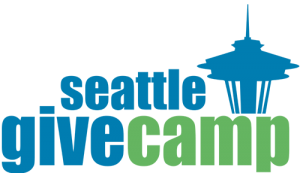As a program manager, you keep the team on track and optimize everyone’s time to most efficiently deliver value to the non-profits and the community.
Before the Event
The following checklist is for any of our nonprofits who are rebuilding a website. Not everything will apply to every nonprofit’s project.
Website Rebuild Preparation Checklist for Nonprofits
- Website Information:
- Existing website URL (if applicable)
- Content: Any existing text, images, videos, and other media files for the website.
- Access credentials: Usernames and passwords for the current website’s content management system (CMS) or hosting platform.
- Important: We would rather not collect these passwords, but rather make sure nonprofit reps have them when we need them during the hackathon.
- Usernames and passwords for databases involved in the current website.
- Ensure that the website and database access credentials provide administrator access.
- Domain and Hosting Details:
- Domain registration information: Registrar name, login credentials, and access to manage DNS settings.
- Hosting provider details: Hosting company, login credentials, and access to the hosting control panel or dashboard.
- FTP (File Transfer Protocol) credentials, if used.
- Branding and Design Assets:
- Logo files: High-resolution logo files in various formats (e.g., PNG, JPG, SVG).
- Brand guidelines (if available): Colors, fonts, and other brand-specific design elements.
- Content Assets:
- Any specific content requirements, such as mission statements, program descriptions, and success stories.
- High-quality images and videos related to the nonprofit’s work.
- Functionality and Features:
- List of desired features or functionality for the new website (e.g., contact forms, donation buttons, event calendars).
- Specific goals and objectives for the website (e.g., increasing online donations, improving user engagement).
- User Access and Permissions:
- Identify nonprofit team members who will be involved in managing the website.
- Define user roles and permissions for content editors, administrators, and other contributors.
- Analytics and Tracking:
- If applicable, provide access to existing website analytics tools (e.g., Google Analytics) to understand user behavior and track website performance.
- Technical Requirements:
- Any specific technical requirements or preferences for the new website (e.g., preferred CMS, hosting platform).
- Communication Preferences:
- Contact information for the nonprofit’s main point of contact during the GiveCamp event.
- Preferred communication channels (e.g., email, phone) and availability.
- Documentation:
- Any existing documentation related to the website, including user manuals, guides, or previous development notes.
- Backup and Security:
- Ensure that backups of the existing website and its data are in place before the event.
- Review and provide information on any security measures currently in place for the website.
- Additional Information:
- Any additional information or specific goals that the nonprofit would like to achieve with the new website.
- Any preferred themes or design ideas, if applicable.
During the event
- Ask the nonprofit if it would be okay to add a “Built by GiveCamp” logo and link to apps/sites built during GiveCamp
